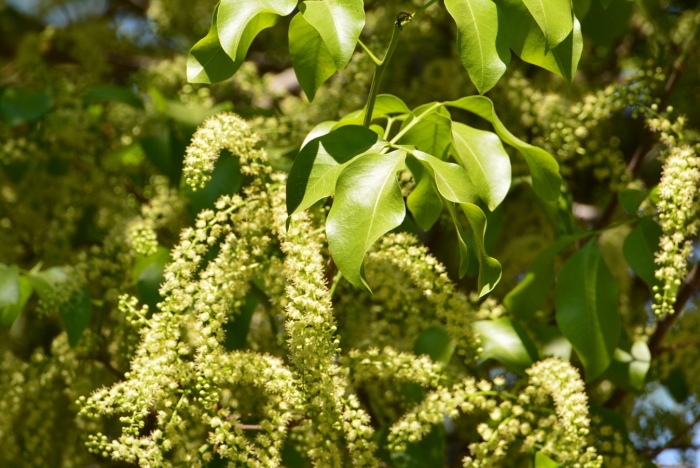Quenepa
(Melicoccus bijugatus)
Quenepa (Melicoccus bijugatus)
/
/

Neptalí Ramírez Marcial
CC BY 4.0
Image By:
Neptalí Ramírez Marcial
Recorded By:
Copyright:
CC BY 4.0
Copyright Notice:
Photo by: Neptalí Ramírez Marcial | License Type: CC BY 4.0 | License URL: http://creativecommons.org/licenses/by/4.0/ | Rights Holder: Neptalí Ramírez Marcial | Publisher: iNaturalist | Date Created: 2018-03-10T14:16:02-08:00 |

























Estimated Native Range
Summary
Melicoccus bijugatus, commonly known as quenepa or Spanish lime, is a fruit-bearing tree native to dry forests and coastal woodlands in northern South America. It has also become naturalized across Central America, the Caribbean, and parts of the Old World tropics. This semi-deciduous tree typically reaches heights of up to 82 feet (25 meters) and has a spreading canopy. The leaves are compound with usually four elliptic leaflets, and the bark is gray and furrowed. The tree produces small, inconspicuous flowers followed by round, green drupes, 1-2 inches in diameter, each containing an edible orange pulp with a bittersweet, wine-like flavor and mild laxative properties. The fruit is often consumed fresh or used in beverages and desserts.
Quenepa trees are valued for their fruit production and are often grown in tropical home gardens and orchards. They are also used as shade trees due to their dense canopy. In cultivation, quenepa trees prefer full sun to partial shade, well-drained soils, and are tolerant of drought once established. They are relatively low-maintenance but can be susceptible to pests such as scales and borers. Due to their potential invasiveness, it is important to check local regulations before planting quenepa outside its native range.CC BY-SA 4.0
Quenepa trees are valued for their fruit production and are often grown in tropical home gardens and orchards. They are also used as shade trees due to their dense canopy. In cultivation, quenepa trees prefer full sun to partial shade, well-drained soils, and are tolerant of drought once established. They are relatively low-maintenance but can be susceptible to pests such as scales and borers. Due to their potential invasiveness, it is important to check local regulations before planting quenepa outside its native range.CC BY-SA 4.0
Plant Description
- Plant Type: Tree
- Height: 26-82 feet
- Width: 15-25 feet
- Growth Rate: Slow, Moderate
- Flower Color: Green, White
- Flowering Season: Spring, Summer
- Leaf Retention: Evergreen
Growth Requirements
- Sun: Full Sun, Part Shade
- Water: Medium
- Drainage: Medium, Slow
Common Uses
Edible*Disclaimer: Easyscape's listed plant edibility is for informational use. Always verify the safety and proper identification of any plant before consumption.
Natural Habitat
Native to dry forests and coastal woodlands in northern South America
Other Names
Common Names: Spanish lime, Honigbeere, Jamaica Bullace Plum, Honeyberry, Mamoncillo, Guinep, Quenepa, Kenepa
Scientific Names: , Melicoccus bijugatus, ? bijuga, Melicocca bijuga, Melicocca bijuga f. alata, Melicocca bijugata, Melicocca carpoodea, Melicoccus bijuga, Melicoccus bijugatus f. alatus, Melicoccus carpopodea
GBIF Accepted Name: